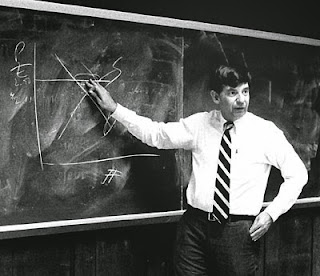All university managers should have to teach

When I was a graduate student at Princeton it was known that the President, William Bowen , regularly taught an undergraduate class. I recall reading that he thought that this was important so he did not lose touch with what the institution was all about. Much later in 2011 Bowen also said "Teaching and doing research are very good preparation for this kind of job because you have to analyze issues and understand them, and you have to be able to communicate," he said. "Teaching is a great way to hone whatever skills one has in that area. A lot of being president is about teaching." Also, while watching The Ivory Tower I noticed that Michael Roth, the president of Wesleyan College , seemed to be teaching undergraduates. Indeed, his web page says, He continues to teach undergraduate courses, and through Coursera has offered MOOCs, the most recent being “How to Change the World.” Does anyone know of other examples? I think Bowen and Roth should not be an






